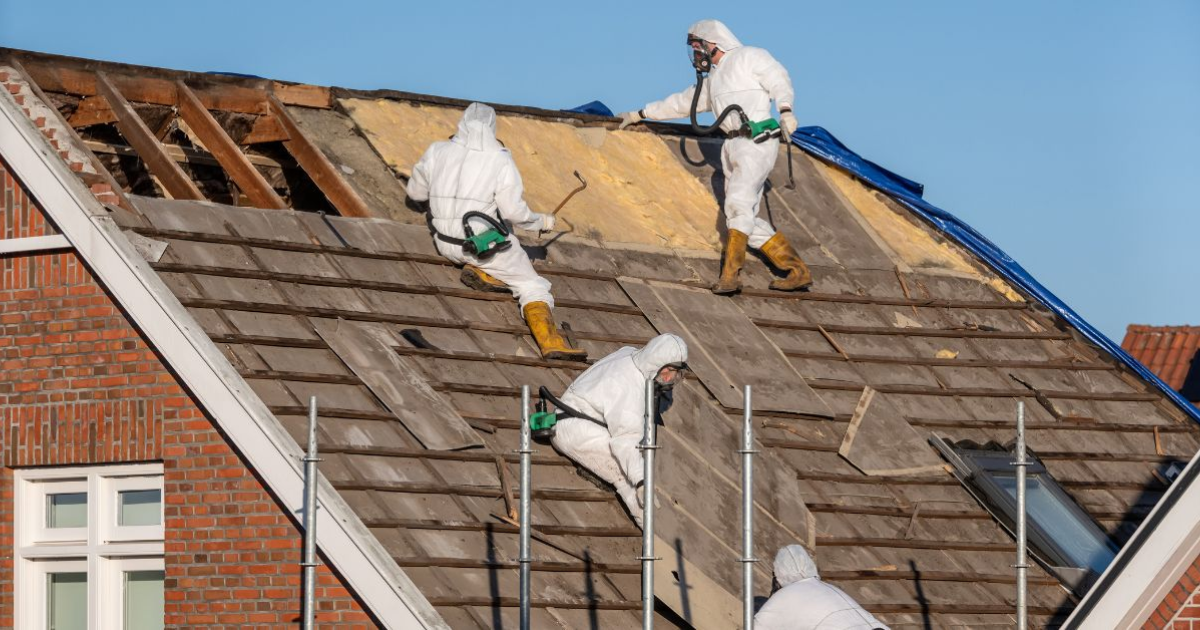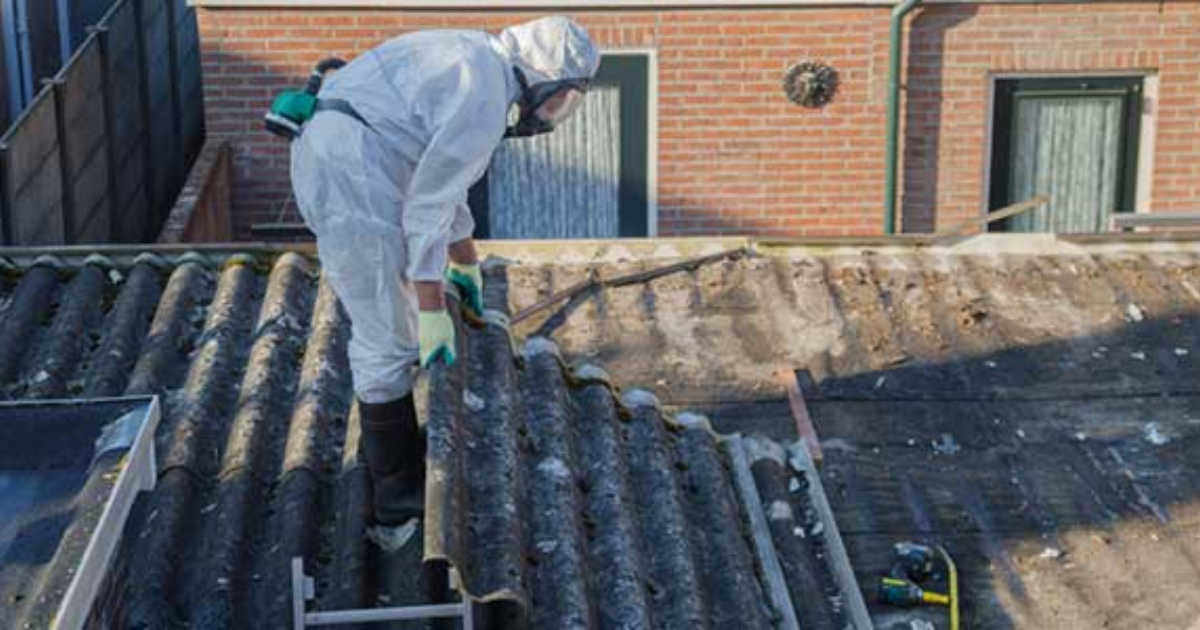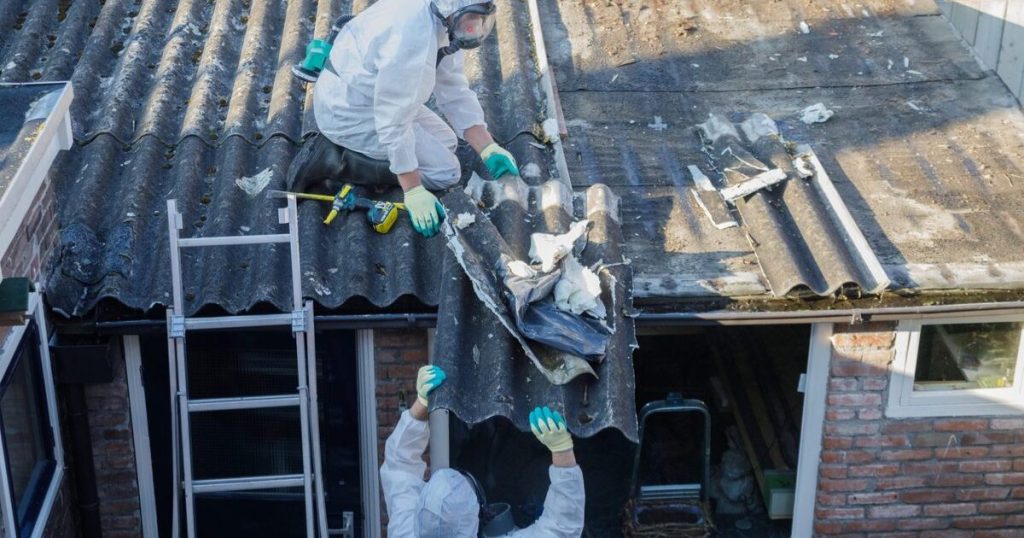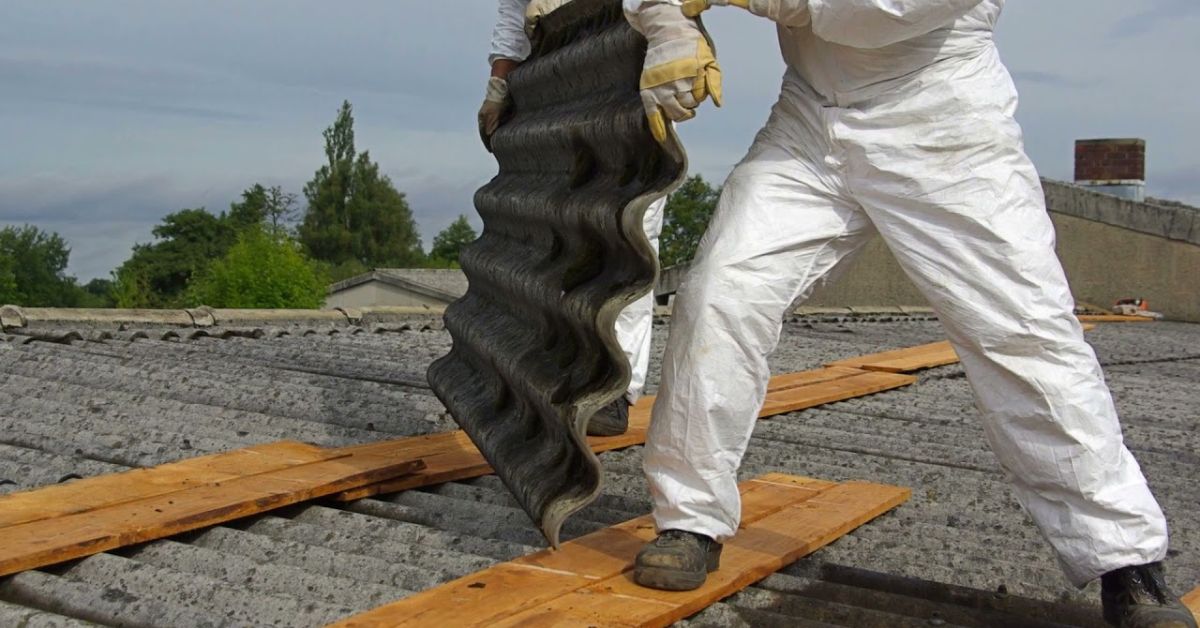Renovating an old Australian home and discovering asbestos? Hit the brakes! Asbestos isn’t just another building material. Its tiny fibers can spark lung cancer or mesothelioma if inhaled, making it a serious health threat. Australia’s strict laws, like the Work Health and Safety Regulations 2011, control who can touch it and how.
Builders might think they can remove the asbestos to save cash. But is that legal? Or safe? The answers can be tricky. Asbestos removal is a legal maze, from obtaining the proper licenses to following disposal regulations. This article unpacks it all, diving into whether builders can legally handle asbestos and why pros are often the best call. When it’s about keeping you and your family safe, pros like Crown Asbestos Removal get it done legally and with no mess.
Importance of Professional Asbestos Removal
Asbestos is no joke – those tiny fibres can be deadly. In Australia, strict regulations are in place for a reason: safety. That’s why professional asbestos removal isn’t just a smart choice – it’s the law. Licensed experts like Crown Asbestos Removal know how to handle asbestos safely, legally, and without putting anyone at risk. Trying to deal with it yourself? That’s a fast track to danger. Here’s why calling the pros is the only way to go.
- Expert Training: Pros are trained to manage asbestos without risks. They know how to keep those dangerous fibers locked down.
- Specialized Gear: They use respirators and sealed suits to trap dust. This protects workers and everyone nearby.
- Legal Compliance: Asbestos removal follows strict regulations. Professionals stick to every rule, from cleanup to disposal, dodging hefty fines.
- Peace of Mind: With experts, you avoid health hazards and legal woes. The job’s done right, allowing you to focus on your project.
Don’t risk a DIY disaster. It could cost you your health or a fortune in penalties. Hire licensed professionals to ensure safety and keep your renovation on track. Need help? Look for certified asbestos removal services in your area to get started.
Can a builder remove Asbestos?

It’s not a simple yes or no. Only builders with a Class A or Class B asbestos removal license can take on the job.
Class A covers dangerous friable asbestos, like insulation, while Class B covers non-friable materials, like cement sheets. Even then, unlicensed builders might remove small amounts of non-friable asbestos, but only with proper training, like the CPCCDE3014A course. They also need specialized gear – respirators, sealed suits – to avoid breathing in fibers.
For big jobs or friable asbestos, you must hire a licensed professional. Cutting corners can lead to hefty fines or serious health issues. Don’t risk it. Call in experts like Crown Asbestos Removal for safe, certified asbestos removal that keeps your project on track.
What are the Legal Requirements and Regulations for Asbestos Removal

In Australia, asbestos removal is strictly governed by the Work Health and Safety (WHS) Regulations 2011. These regulations apply across most states and territories, including New South Wales, Queensland, and the Australian Capital Territory. Victoria and Western Australia follow similar rules under their own legislation, but the requirements remain largely consistent nationwide.
1. Licensing Requirements
According to the WHS Regulations 2011 – Part 8.7: Asbestos Removal Work, any work involving friable asbestos requires a Class A licence. This licence allows the removal of all types of asbestos, including materials that can easily release airborne fibres.
A Class B licence is needed to remove non-friable (bonded) asbestos, but only when the area exceeds 10 square metres. A licence isn’t required for smaller areas, but the person must still follow all safety protocols outlined in the WHS Regulations.
2. Training and Competency
The regulations also state that anyone working near or with asbestos must complete asbestos awareness training. If involved in actual removal, they must also complete task-specific training relevant to the asbestos type and the job’s risk level.
Those conducting air monitoring and clearance inspections for friable asbestos must be accredited as licensed asbestos assessors.
3. Notification Before Work
Under the WHS Regulations, employers must notify the relevant workplace health and safety authority at least five days before starting any licensed asbestos removal work. This ensures that the regulators have time to assess the proposed work and ensure all required safety measures are in place.
According to the HSE, employers must notify the Health and Safety Executive (HSE) or the appropriate authority before carrying out specific types of asbestos work. Even if a license is not needed for certain non-licensed asbestos work, the work must still be reported to the relevant regulatory body.
4. Air Monitoring
Air monitoring is required under Regulation 477 of the Work Health and Safety Regulations 2011 (WHS Regulations) during friable asbestos removal. A licensed asbestos assessor must conduct monitoring to ensure airborne asbestos fibre levels stay below 0.01 fibres per millilitre. The Model Code of Practice also mandates this: How to Safely Remove Asbestos, under section 274 of the Work Health and Safety Act 2011.
5. Clearance Inspections
Once removal is completed, a clearance inspection must be carried out before the area can be reoccupied. For Class A work involving friable asbestos, the inspection must be done by an independent licensed asbestos assessor who was not involved in the removal. For Class B removal involving non-friable asbestos, a competent person who meets specific criteria and was not part of the removal team can carry out the inspection. A formal clearance certificate must be issued to prove the site is safe to enter again.
6. Waste Disposal
All asbestos waste must be sealed in strong, leak-proof, and clearly labelled containers. The material must then be transported to a licensed disposal facility. Mixing asbestos with other types of waste or disposing of it in a regular landfill is illegal under Australian environmental and workplace safety laws.
7. Health Monitoring
If a worker is at risk of exposure to asbestos fibres during their duties, the WHS Regulations require the employer to provide ongoing health monitoring. A registered medical practitioner must arrange this, which may include lung function tests or chest X-rays. Records of health checks must be kept and provided to the worker upon request.
By following these legal requirements, builders and contractors protect health and safety and avoid severe penalties and prosecution. The rules are designed to ensure that asbestos is removed in a way that minimises risk and ensures long-term safety for everyone involved.
How to Safely Remove Asbestos-Containing Materials
Asbestos removal is serious business. It requires precision and care to protect everyone involved. Only trained professionals should handle it. Here’s how builders can do it safely and stay compliant.
1. Start with Training
Knowledge is power. Enroll in a certified asbestos training program and get an asbestos clearance certificate. Learn to identify asbestos, understand its risks, and master safe handling techniques. Without training, builders should not attempt removal.
2. Wear the Right Gear
Protection is critical. Equip yourself with a respirator to block asbestos fibers. Use disposable coveralls, gloves, and sturdy boots. Proper gear prevents exposure to harmful particles.
3. Secure the Work Zone
Contain the danger. Seal off the area with plastic sheeting. Install negative air pressure systems to trap fibers. Clear warning signs keep unauthorized people out and reduce risks.
4. Handle Materials Gently
Careful handling matters. Wet asbestos materials to minimize dust. Use hand tools, not power tools, to avoid fiber release. Place items in sealed bags with caution to keep fibers contained.
5. Dispose of Waste Properly
Asbestos waste requires special care. Double-bag it in labeled, heavy-duty bags. Transport it to approved hazardous waste facilities. Follow local disposal rules to avoid penalties.
6. Follow Local Regulations
Rules differ by location. Some areas permit builders to remove low-risk asbestos with training. Others require licensed specialists. Check local laws and notify authorities if needed.
7. Know When to Call Experts
High-risk asbestos, like insulation, demands professionals. Licensed removalists have the expertise and equipment to handle it safely. When in doubt, hire a specialist.
Safe asbestos removal protects workers and communities. Builders can manage it responsibly with the right training, gear, and compliance.
Advantages of Hiring a Licensed Asbestos Removal Service
Asbestos removal is a health hazard, and Australia’s strict laws demand expert handling. Licensed asbestos removal services, like Crown Asbestos Removal, deliver safety and peace of mind. They’ve got the skills and know-how to get it done right. Here’s why hiring licensed pros is a must:
- Unmatched Safety: Licensed teams use advanced gear – respirators, sealed suits, and containment barriers – to lock down asbestos fibers. They follow strict protocols to ensure no dust escapes, protecting you, your workers, and nearby families from lung cancer or mesothelioma.
- Legal Protection: Asbestos laws are no joke. Licensed pros navigate Class A/B licensing, notifications, and disposal rules with ease. They keep your project compliant, saving you from fines or jail time that can hit hard for violations.
- Expert Precision: Trained professionals know asbestos inside out. They remove friable materials, like insulation, or non-friable ones, like cement sheets, without spreading dust. Their precision cuts health risks and avoids costly errors that DIY attempts often cause.
- Hassle-Free Experience: Licensed services handle the whole process – site checks, permits, and cleanup. You don’t waste time on paperwork or disposal logistics. This keeps your renovation on schedule.
- Cost-Effective Choice: Think DIY saves money? Wrong! Mistakes lead to health issues, fines, or project delays that cost a fortune. Licensed pros do it right the first time, saving you cash long-term by avoiding rework or penalties.
- Environmental Responsibility: Improper disposal harms the planet. Licensed teams double-wrap and label asbestos waste, delivering it to approved landfills. This protects the environment and keeps you clear of illegal dumping fines.
Don’t risk your health or project with DIY asbestos removal. Licensed professionals ensure safety, compliance, and a smooth process. For trusted expertise, consider services like Crown Asbestos Removal to handle your asbestos needs professionally.
In Closing
In Australia, builders can legally remove asbestos only if they meet strict licensing, training, and safety requirements under the WHS Regulations 2011. Unlicensed removal is allowed for small amounts of non-friable asbestos, but it must still follow the law.
Safe removal protects both workers and the public. Always check credentials and follow legal guidelines to ensure asbestos is handled correctly and safely – health and safety must come first.
Frequently Asked Questions
Q. Can any builder remove asbestos in Australia?
Answer: No. Only builders with the proper asbestos removal licence can legally remove friable asbestos. Builders can remove non-friable asbestos under 10m² without a licence, but they must still follow strict safety rules set out by the Work Health and Safety Regulations.
Q. What happens if asbestos is removed illegally?
Answer: Illegal asbestos removal can lead to large fines, prosecution, and serious health risks. It endangers workers, residents, and the environment. Authorities take non-compliance seriously, and penalties apply to individuals and businesses that fail to meet legal and safety standards.
Q. Is a licence needed for all asbestos work?
Answer: No. A licence is required for friable asbestos and non-friable asbestos over 10m². However, even unlicensed work must follow strict safety guidelines. Proper training, protective equipment, and legal procedures must be in place regardless of the size or type of asbestos.
Q. How do I know if a builder is licensed?
Answer: Ask to see their asbestos removal licence or check their details on your local work health and safety authority’s online register. Confirming credentials before removal work begins is important to ensure compliance and safety.
Q. Why is air monitoring important during asbestos removal?
Answer: Air monitoring detects harmful asbestos fibres during friable asbestos removal. It ensures the air is safe for workers and others nearby. Conducted by licensed assessors, it confirms that control measures work and helps determine when an area is safe to re-enter.

